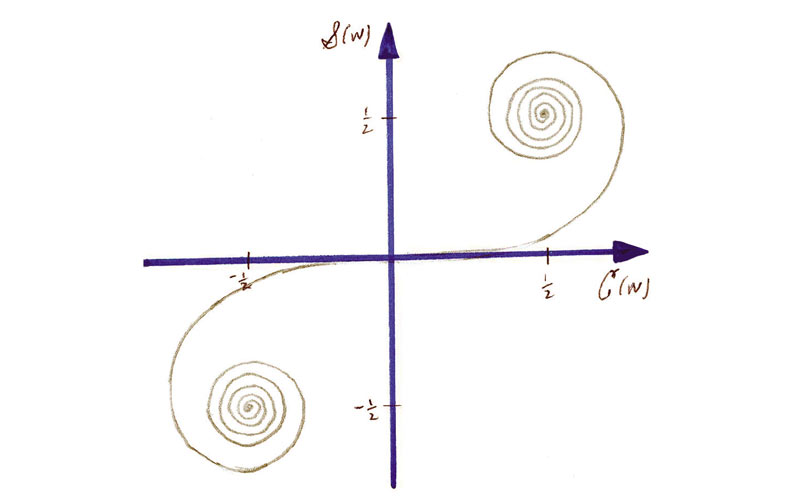Diffraction, Part 3
Fall
2013
Elegant Connections in Physics
Diffraction, Part 3
Curved Wavefronts And Fresnel Diffraction
By:Dwight E. Neuenschwander, Southern Nazarene University

When Thomas Young presented his wave theory of diffraction before Great Britain’s Royal Society on January 16,1800, it was coolly received. One historian of physics writes[1]
“…the wave theory might have suffered sterility and oblivion had not sounder critics revived it in France. In 1815 Augustin Fresnel, a brilliant young military engineer and mathematician, submitted to the Academy a paper on diffraction, which, as was the custom of that learned body, was reported upon by two members—François Arago and Louis Poinsot. The former took up the matter with great enthusiasm and drew Fresnel’s attention to the almost identical views of Young published fifteen years previously. Although this was the year of the battle of Waterloo, Fresnel paid a generous tribute to Young and they corresponded frequently until the year 1827 when the death of the former put an end to a career full of great promise.”
Parts 1 and 2 of this series[2,3] considered diffraction produced by plane wave fronts—Fraunhofer diffraction. Its signature phenomena include Young’s famous double-slit experiment, which demonstrated the wave nature of light. But of course there is more to the story. An unobstructed wave front radiating from a point source forms an expanding spherical surface. Fresnel diffraction takes into account this spherical shape, and I would be remiss to not discuss it, and show how to derive it, in this summary of the basic elements of diffraction theory.
See full article here.
